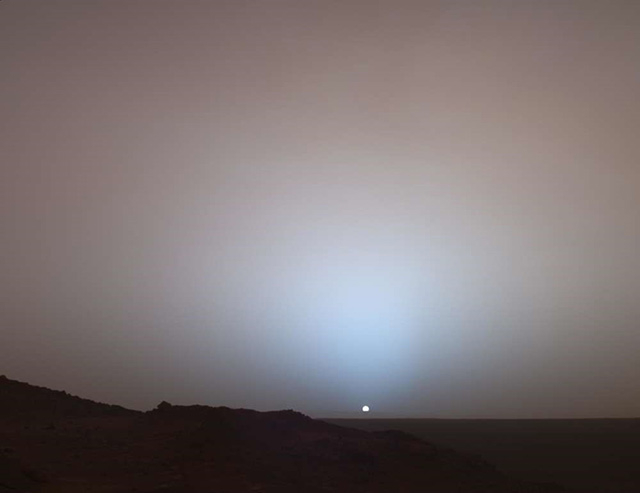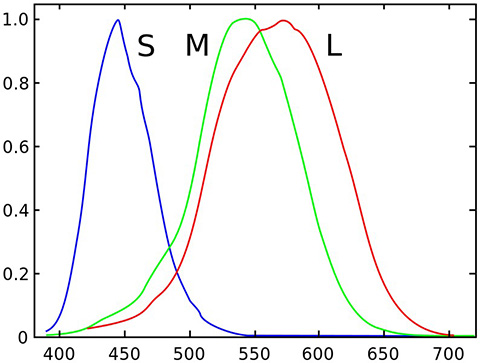
Space is black—so why is the sky blue…and the sunset red?
It has to do with the properties of sunlight and Earth’s atmosphere.
Sunlight is made up of many wavelengths of visible light. Combined, we see them as white. But individually they’re a rainbow of colors, from violet and blue to orange and red.
When sunlight enters Earth’s atmosphere, it collides with molecules of oxygen, nitrogen, and other particulates, which scatter the light into different colors.
Violet and blue light have the shortest frequencies and the most energy, so they scatter the most. Much of the violet light is absorbed by the upper atmosphere, but blue light is reflected throughout the atmosphere, giving us a blue sky.
Once near the surface, blue light has been scattered and reflected so much, it recombines with other colors into full-spectrum white light.
When the sun nears the horizon, sunlight passes through much more atmosphere. That longer journey scatters and eventually filters out more of the blue light, leaving the longer-wavelength orange and red light to reach our eyes.
But it’s not this way everywhere. On Mars, the atmosphere is mostly CO2 and filled with iron-rich dust, which scatters the red light, turning the sky there…red.
Except at sunset, when the longer trip through the Martian atmosphere scatters and filters so much red light that blue light passes through—making the sunset…blue!
Background

Synopsis: Many wonder why the sky is blue and sunsets are red. The physics of light, the characteristics of Earth’s atmosphere, and the physiology of the eye result in these colors. The Martian atmosphere, however, leads to different-colored skies and sunsets.
- Why is the sky blue?
- Light coming from the sun contains all the colors of the rainbow (as well as wavelengths we can’t see), but it looks white to us because all the colors are combined.
- Different wavelengths of light create different colors. Humans can see light with wavelengths from about 380 (violet) to 740 (red) nanometers (nm).
- When sunlight enters the atmosphere, it is scattered into its component wavelengths (colors) by molecules of gas (78 percent nitrogen, 21 percent oxygen, 1 percent other) and particles in the air of Earth’s atmosphere.
- Blue light is more energetic with its higher frequency (shorter wavelength, 400–450 nanometers), so it collides with more atmospheric particles and we see more of the scattered blue light.
- In 1859, Irish physicist John Tyndall first discovered this effect, and English physicist Lord Rayleigh later quantified it. It is known both as the Tyndall effect and as Rayleigh scattering.
- As light approaches the ground during the day, it has been scattered, rescattered, and reflected from Earth’s surface many times; the sky fades to a lighter blue or white as light waves interfere with each other.
- Since violet light is of a higher frequency than blue light, why doesn’t the sky look violet?
- The spectrum of light emitted from the sun peaks in the blue wavelengths and drops off for shorter violet wavelengths.
- Earth’s upper atmospheric layers also absorb ultraviolet and violet light more than blue, decreasing violet on the way to the surface.
- The main reason the sky doesn’t look violet is the way human eyes perceive the light spectrum.
- Our eyes have 10 million rods and 5 million cones in each retina.
- Most humans have trichromatic vision, with three types of cones—red, green, and blue—that are the color receptors in our retinas. The wavelengths that stimulate the red and green cones are broad and overlap strongly, while the blue cones respond to a smaller range of wavelengths, dropping off dramatically in the violet range (380–450 nm).

- Why is the sunset red?
- When the sun is low in the sky during a sunset, the sunlight passes obliquely through more of the atmosphere. If the air is very clear, the sunset will look yellow.
- As blue light is rescattered and diminished along the horizontal line of sight, the remaining colors in the spectrum combine to make yellow, as you would expect from a color wheel.
- Sunsets become vivid orange and red where these longer wavelengths reflect off of more particulates like dust, water vapor, salt crystals, and aerosols—typical of regions with ocean mist, pollution sources, ash, and aerosols from volcanic eruptions and the like.
- On Mars, the “Red Planet,” the daytime sky looks red and sunsets are blue, the opposite of what we see on our own planet.
- Martian atmospheric pressure is just 1 percent of Earth’s, and the “air” is made up of carbon dioxide and iron-rich dust that scatters the low-frequency red light to make the sky reddish.
- Looking obliquely through the Martian atmosphere during sunsets, the Curiosity, Spirit, and Opportunity rovers have photographed the blue sunset light that makes it thorough when the red light is scattered away from the line of sight.

